"Not everything that is faced can be changed. But nothing can be changed until it is faced." -James Baldwin
We began with ancient history.
But history is moving quickly. Nearing 88 miles per hour…
But is that fast enough for the sudden and immediate emergence of the Singularity-driven transhumanist future in which everyone constructs a fluid identity daily despite all costs which are absorbed by the A.I.-driven economy that nobody ever has to think about?
I doubt it. I mean…the gull-wing DeLorean was just a flash in the pan.
Back to the Future
"I guess you guys aren't ready for that yet. But your kids are gonna love it." -Marty McFly, time traveler
I might have simply dismissed the claim of acceptance of conceptual gender fluidity in ancient Egypt out of prejudice. This is where prejudice comes in handy on a common sense level. It saves us the finite resource of time. But at the time I first heard the unsubstantiated claim, I was coming to realize that these gender issues, and the culture war surrounding it, really is extremely important to understand. While to many of us it might have appeared that it was an issue fabricated out of thin air, we do seem to be living in a world in which the number of people not conforming to traditional gender and sexual norms is exploding. Jonathan Haidt goes so far as to compare this progression to the Tower of Babel.
It’s been clear for quite a while now that red America and blue America are becoming like two different countries claiming the same territory, with two different versions of the Constitution, economics, and American history. But Babel is not a story about tribalism; it’s a story about the fragmentation of everything. It’s about the shattering of all that had seemed solid, the scattering of people who had been a community. It’s a metaphor for what is happening not only between red and blue, but within the left and within the right, as well as within universities, companies, professional associations, museums, and even families.
At first, I wanted to believe that the comparison to the Tower of Babel, which was part of the conversation a few years prior to Haidt's article in the Atlantic, was unnecessarily pessimistic. I'm no longer so sure, and lean toward seeing the sex-gender fragmentation as a core part of the culture war that isn't yet fully understood by anyone (and is not simply an annoying and unnecessary assertion of babbling verbal nonsense, though that becomes part of such a not-yet-understood idea). After all, we have psychologists like Jean Twenge keeping stats on the rising rates of mental illness and emotional instability among America's youth, which does seem to move as a trend with sex-gender cultural divergence, not to mention some (correlated) of the best evidence that centralized technology that makes nodes out of children isn't healthy for human development.
Source: Jean Twinge "Has the Smartphone Destroyed a Generation?" in The Atlantic
Dangers Faced by Transgender Children and Others Who Suffer
"Compassion is the chief law of human existence." -Fyodor Dostoyevsky
Let us lampoon the politics, but seek to find the roots of human misery. Failing to solve the problem at the roots, we are likely condemned to a cycle of pain.
I'd prefer to get past the whole "Sekhmet destroying half of humanity" cycle, or whatever that was about. Instead of worrying about how to manage nonrenewable resources, I'd prefer to worry about how to make all the humans healthy and productive (so that we invent our way far beyond every resource bottleneck). Yes, I do think this level of human psychology is an economically connected graph.
I've felt sick thinking about why the number of people outside of the two major categories of sex/gender seem to exist today (in America? Or elsewhere also? Do we know?). Being different isn't easy. Most all of us have felt alien in some way at some time, but there are clearly some differences that are more challenging to cope with than others. How could anyone but feel compassion for those born into more miserable circumstances?
Some people never see.
Some people never run.
Some people never invisibly and comfortably walk into a public theater.
Some people never experience the joy of marriage or a sexual partner at all.
Some people starve to death before adulthood.
We all experience our own personal suffering, and of vastly different forms and magnitudes. Whatever goodness I believe in involves learning, controlling, experiencing, managing, and inventing ways to transcend the suffering of ourselves first, and then outwardly to everyone within reach. Communities often do that better than isolated individuals, so long as the communities do not grow beyond our capabilities of watching the watchers. After all, parasocial leadership is a point of critical failure.
Let us not stop at lip service in our compassion. I'd like to understand the problem(s).
And if we fail to give an effort to understanding the problem, are we not the problem?
When examining the transgender community, which seems to have "grown up among children" in recent years, I am convinced that there are relationships to other disorders and the ways that we have dealt with them in society.
The most obvious body of related scientific literature is connected through the generalization of dysphoria and dysmorphia. There, we quickly identify a strong correlation between transgenderism and anorexia nervosa. The relationship is stronger with girls (who suffer four times higher rates of anorexia) growing up feeling like they are boys than the other way around, but there is a correlation within both sexes.
Anorexia manifests as a nervous disorder in which the individual sees their body [image] as an impossible hurdle to the recognition of self worth. Untreated, anorexia has a massive 4% mortality rate, even among young healthy people. That kind of makes infection by a "novel" coronavirus look like a cakewalk.
Source: Curated by Debbie Ging
Step back for a moment: fundamental self worth. Life threatening.
Too many children experience emotional desperation without a guide. Even worse, we do not have anything like a complete biological understanding of sexual dimorphism, dysphorias, or dysmorphias. We can make some statements about the complexities of human development, say the magic word ("epigenetic") and pat ourselves on the back for walking to the starting line. But we're somewhat lost in a labyrinth on these topics.
Are environmental poisons having an effect?
Are parents giving up their primary responsibility to intentional or accidental technocracy?
Are pharmaceutical products altering biological development?
Are there links between these disorders and autism?
Are children watching too much Oprah?
Are schools robbing children of spiritual development?
We have a lot of deep questions to explore before we're likely to get near the root of the problem(s). Still, we can mount a defense after identifying some key pieces of the puzzle.
Ladies First
"A man's got to have a code…to live by…" -John Wayne
Throw in an ellipsis here or there and you can make John Wayne look like a geneticist.
Source: True Grit via "5 Things Men Can Learn About Being a Man From John Wayne"
It takes a lot to be a man, biologically speaking. From the moment of fertilization, the human default is female. There is even a pairing of the X chromosome (and all the others) to make it all work out correctly. To form a man, the process requires a whole 'nother chromosome that breaks symmetry and redundancy. It's risky.
Not quite there, yet. There is also this sex-determining region Y protein (SRY) that needs to…okay, let's just say that a bunch of stuff happens. From a paper entitled "Disorders of Sex Development" (Witchel, 2017):
Typically, the presence of the SRY gene on the Y chromosome triggers the cascade of molecular events leading to male sex development. Disorders of sex development comprise a heterogenous group of congenital conditions associated with atypical development of internal and external genitalia. These disorders are generally attributed to deviations from the typical progression of sex development. Disorders of sex development can be classified into several categories including chromosomal, gonadal, and anatomic abnormalities. Genetic tools such as microarray analyses and next-generation sequencing techniques have identified novel genetic variants among patients with DSD. Most importantly, patient management needs to be individualized especially for decisions related to sex of rearing, surgical interventions, hormone treatment, and potential for fertility preservation.
The key take home: it all has to work. Otherwise, the result is not a fully developed masculine man as we generally conceive of one. Take this as an educational video. One missed step would result in a machine that needs external help.
Here is a list of DSDs that can serve as a cocktail party crib sheet.
Source: Garcia-Acero et al, 2019
Though not listed here as a DSD, there is something called Fragile X syndrome that affects males more frequently and more severely than females. A mutation of the FMR1 gene leads to high rates of intellectual disability and autism-like features. A significant proportion of the males in particular who suffer from Fragile X wind up in prison, mental institutions, or other forms of long-term care.
It's hard to be the perfect model of a man. You have to be responsible for this Y chromosome, and then anything that goes wrong with your X chromosome throws the machinery more out of whack. Autism studies show male:female ratios in autism to vary from around 3:1 (Loomes et al, 2017) to 8:1 (Danish study, via Spectrum News, source of image below), so far as I've seen.
There are further epigenetic factors (because there always are), but it appears that males simply suffer from a greater prevalence of developmental disorders.
It also seems to be the case that developmental disorders, which are tied to sex, are then tied to sexuality, perhaps sexual expression (there are more gay men than women), and perhaps also gender dysphoria. The scientific literature does reflect various connections (Dutton & Madison, 2020), but mechanisms are not understood (and probably won't be any time soon).
Results
Individuals with GD tend to exhibit scores that reflect heightened levels of androgens and masculinity compared with non-GD individuals. We further show that these same androgen indices are also associated with other identity disorders (or dysphoriae).
Conclusions
Autism is associated with masculinisation, and we argue that GD may reflect autism spectrum disorder traits that indirectly lead to anxiety and to one questioning one’s sense of self. We note that this is consistent with Blanchard’s transsexualism typology, which successfully integrates a wide range of empirical findings.
Identity or Disorder?
"My mother agreed to aid my abuse of alcohol but only if I promised never to tell my newly converted Mormon sister, whose identity I had stolen." -Chelsea Handler
Warning: If you don't help answer the question (at a community level), somebody else is going to do that for you.
This is going to be a difficult question, but the culture war surrounding this topic already hinges on it to a large degree. Fleming does a good job expressing a desired balance with her article, but as you might suspect, I don't think we can rein all this in with thirteen paragraphs.
What's this?
You have to ask whether this is a new phenomenon, or whether we're identifying sub-problems that would work themselves out if only we were coaching children to work problems out rather than pressuring them to absorb and internalize a tyranny of metrics en route to surviving the Best Slave Pageant so they can ascend to Brown University.
From the article:
The children of the parents surveyed were more than 80 percent female at birth and ranged between 11 and 27 years old at the time of survey, with an average age of 16. Additionally, 47 percent of the children were reported as academically gifted, and 41 percent expressed a non-heterosexual sexual orientation prior to their gender dysphoria symptoms. Most of the parent respondents were female, white and U.S. residents.
So, this dysphoria just happens to be associated with competitive white girls in America?
I wager that a minimum of 100% of them know what "matriculate" means when they take the SAT.
You know who cults most easily take in? People with immature or traumatically altered feelings of self worth. Is that what we're really dealing with? I think that may often be exactly what we're dealing with.
Are we dealing with cults again?
I think so, but in a unique way that is approximately as new as smart phones. We might even need to expand the definition of cults a bit—particularly if there is electronic and memetic transfection.
One way or another, this is not a question without evidence for examination. Before we get there, let's return to Twenge's observation about smartphones. Smartphones are ever present portals to online communities. And communities are where identities shift through a horizontal transfer of values.
Thankfully, I never had an eating disorder. Naturally, this made me slow to become aware of the existence and impact of pro-anorexia online communities (or pro-ana, which sounds unnervingly cute—a hallmark of all manner of cyberpoisons).
According to Healthline, pro-ana communities popped up or became popular in the late 1990s. That makes sense to me given that most of my high school classmates were still not regularly on the internet in the early 1990s, but my entire freshman class in college was given an organized introduction to the internet in 1995. But we may be able to pinpoint the moment the popularity among these sites exploded among younger girls. Participation in pro-ana sites exploded 470% in 2007, the year the iPhone came out. It was a growth year for the internet.
Source: Optenet Trend Report, 2008
And it didn't stop there. It took a few years for enough people to understand what had happened and begin to push back. From Wikipedia:
Pro-ana groups differ widely in their stances. Most claim that they exist mainly as a non-judgmental environment for anorexics; a place to turn to, to discuss their illness, and to support those who choose to enter recovery. Others deny anorexia nervosa is a mental illness and claim instead that it is a "lifestyle choice" that should be respected by doctors and family.[1]
I'm not saying that "lifestyle choice" is always a bullshit answer, but if you want to claim something that drives so many people to "distress and an inability to function" which often leads to suicide as a "lifestyle choice" for promotional purposes, you need to lay out a strong foundational argument. And then be prepared for me to punch you square in the jaw if I think it still sounds like bullshit when you're done.
But that's a fatherly reaction. And the odds are that the worst damage is done among those who grow up in abusive environments, or don't have a healthy level of parental support to help navigate life issues. Regardless of the [poisons we've introduced into the world, the seductive lure of technology, or mismanagement of the public child prison boxes], good and careful parenting can often prevent the worst forms of damage.
Women, Girls, and Community
"Sisters in battle, I am shield and blade to you." -Leigh Bardugo, Wonder Woman: Warbringer
Both when doing it in a healthy way, and when doing it in an unhealthy way, the female sex drives harder toward community formation. It's love. It's strength. It's validation.
It's approbation.
(They don't even need to consult an SAT study guide.)
(Men, if you aren't sure if you get it, talk to your wives or girlfriends more.)
And it might even feel glamorous, which is a bit disturbing when you're looking inward from the outside.
But here is the more disturbing part that we find when we dig into the story: the choice between having a community that promotes illness, and not having a community at all is a seriously difficult choice to make. And in a Thalesian sense, struggling girls are water in their communities.
Host: "Those spaces exist because we have failed collectively this segment of the population…"
Yeah, wow. Even the people who fully understand how terrible their eating disorders were felt like those communities that promoted their mental illness helped them during their darkest hours. There are even observers in the medical and research communities who posit that girls are seduced into these communities who might not otherwise be themselves transgender (or perhaps have the mildest of "tomboy syndrome"). We might also ask the question as to whether these communities "transmute" anorexia among girls/women into rapidly perceived transgenderism. The Littman study out of Brown received some heated pushback, but she may have opened exactly the right door for further study.
Because people need community—perhaps teenage girls most of all. And perhaps having put a smartphone in the hand of nearly every girl who can tie their shoes (if shoelaces are still a thing…I forgot to research that), we've trained them out of building communities in their geographic neighborhoods.
This is a wakeup call. It's all about community, and our communities are broken. Not just this one—lots of them. As an exercise, craft a paragraph in which you type the word "community" eleventeen times, or hum it as a mantra during your next at-home yoga class. Whatever drives home the point.
The still ongoing saga of the pro-ana communities is the canary in the coalmine because the problems involved (mental illness, societal fragmentation, perverse incentives) are so undeniable to most of us.
And we know this. We know this because coaching (for anything in life) has become something like the world's most common profession. And protip: therein lies a perverse incentive, and a perverse incentive that becomes an established economic feedback loop is just trading one problem for another one. We won't solve the problem through professionalization. We have to solve it at the roots—community building.
If we do not build healthy communities, we should assume many of the children will jump off cliffs before they're old enough for maturity of their executive functions, and there will be few to catch them. Some will die. Others will join antifa. Still others will successfully navigate academia and join the Malthusian cult of the genocidal privileged. Is that overstating the risk? Take a look at this content analysis of pro-ana sites (Borzekowski et al, 2010), emphasis mine:
Results. Practically all (91%) of the Web sites were open to the public, and most (79%) had interactive features. A large majority (84%) offered pro-anorexia content, and 64% provided pro-bulimia content. Few sites focused on eating disorders as a lifestyle choice. Thinspiration material appeared on 85% of the sites, and 83% provided overt suggestions on how to engage in eating-disordered behaviors. Thirty-eight percent of the sites included recovery-oriented information or links. Common themes were success, control, perfection, and solidarity.
This is the language of ideological cults. That's soldier camp.
We could ignore it. Out of sight, out of mind. We could ostracize and reject the members of these communities. How's that working out?
Reject children at your own risk. The Old Man in the Mountain will thank you for these gifts.
What does this have to do with transgenderism again?
Correct question. We need to figure that out. While the suicide rate among the transgender is not as high as among anorexics, it's high. But here's the rub: there is substantial overlap between the two disorders—so much so that I haven't found research that distinguishes or attributes suicide or attempted suicide well enough to either disorder (for my personal standard).
One way or another, we know that sex-related disorders and neurological/nervous disorders are related. I would suggest that so too is "community disorder" as we see those seeking alternative communities quickly crossing boundaries between their various disorders, perhaps depending on their chosen identity and coping mechanism.
Still, society has started to treat these conditions in entirely different ways! This drives a substantial portion of identity politics. It might even continue to drive politics at a stealth level for those who climb out of the shadows of their disorders in a disciplined way, then join "normal/normie" community—or at least be accepted into it. On a positive note, some people are exploring the disorder/identity dichotomy:
My girlfriend has said this several times and brought it up again. She wonders what the difference is between her anorexia and transgender identity. Why do we encourage those who suffer from body dysphoria (or trans) to change their body to match their mind, but tell those with ED that they are suffering from a mental illness?
It is an interesting question, that is for sure. I am doing research on it now. Does anyone have thoughts?
Now, we could blame the identity activist foot soldiers demanding respect for their pronoun choices (which might as well seem like a mind reading test to most people), but there are problems that precede the politics. And it might very well be that the activists who bring all public discussion to a screeching halt when humored, are knowingly manipulated for the gains of others.
Isn't it their problem that they join those activist cults?
There is literally no use in blaming the children who become the hashashim. The idea is a nonstarter. If you want to retake civilization, you're going to have to go after the Old Man in the Mountain. You're going to have to take on the Kunlangeta. And the easiest ways to do that don't involve a massive bloody war. They involve taking away the tools and toys: their currency and their golems.
I thought this was about transgenderism. Aren't those mostly boys?
Transgenderism, to the degree that it's part of the culture war (it isn't always, and it doesn't have to be), is about the wars of the Kunlangeta. It's about Moloch. It's about the spiritual void that happens when we don't actively build community. Breath and repeat.
But we'll talk more about the transgender boys in Part 3…







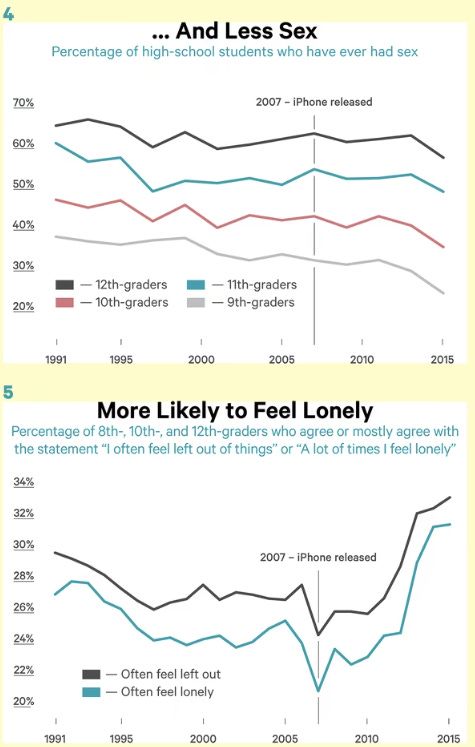
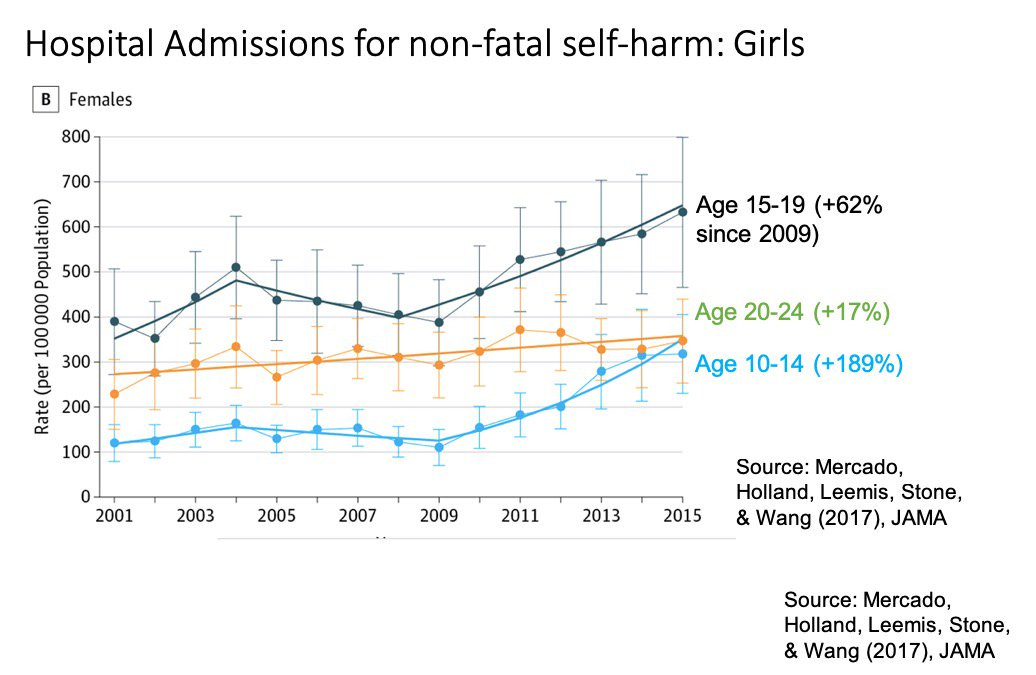



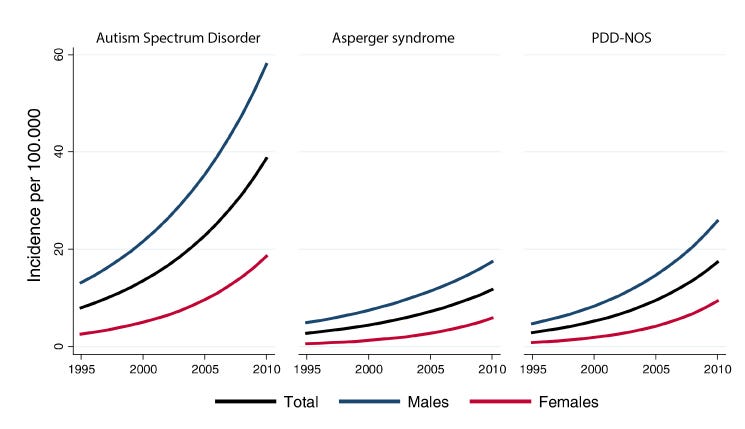


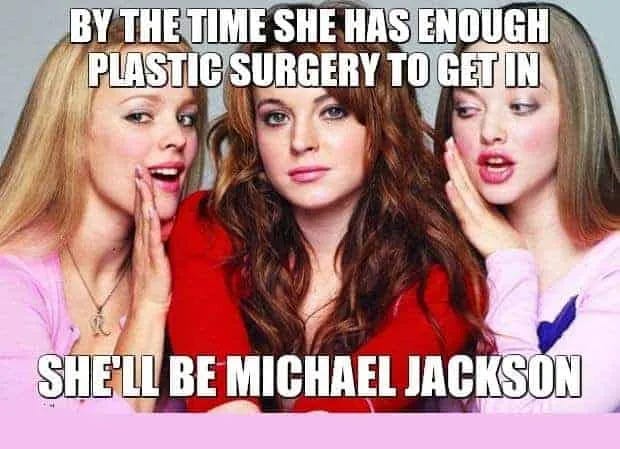

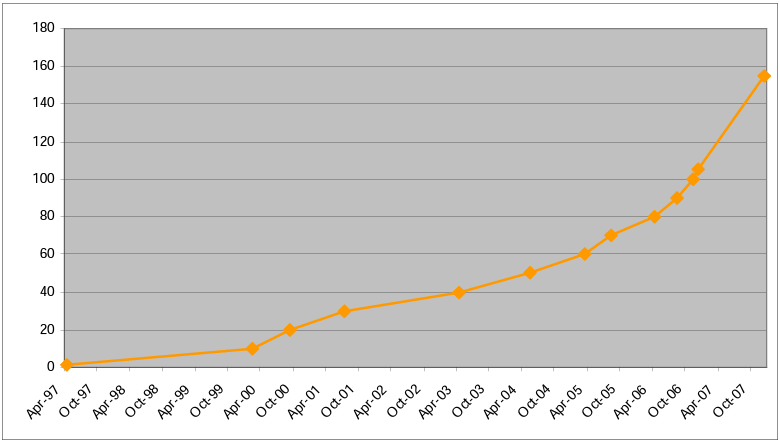



I wanted to get Part 1 out without fully open comments, but I'm allowing commenting by everyone for this one since the story is maturing through this point.
Yes I've seen community erode in multiple different ways here in the UK. Accelerated by lockdowns. e.g. our rugby club has gone from 4 teams and a vets side down to 2 teams. e.g. my monthly geek friend meetup running for 18 years collapsed with no recovery after lockdowns.
Not to mention family atomisation and divorce leading to smaller households.
We scoped Mexico for a perm move, and the amount of multi-generational family time they're mustering puts the UK to shame.
My partner and I decided she would be a fulltime mum, and she gets a ton of societal heat for not "putting the baby on bottle" at 6months, 12 months etc. and "when are you going to get a job again?" meanwhile we observe infants and toddlers and kids lights going out. Raising a relaxed, self-motivated, curious child isn't valued enough by society. Like you say if we neglect the babies and they end up the opposite, what do we expect?